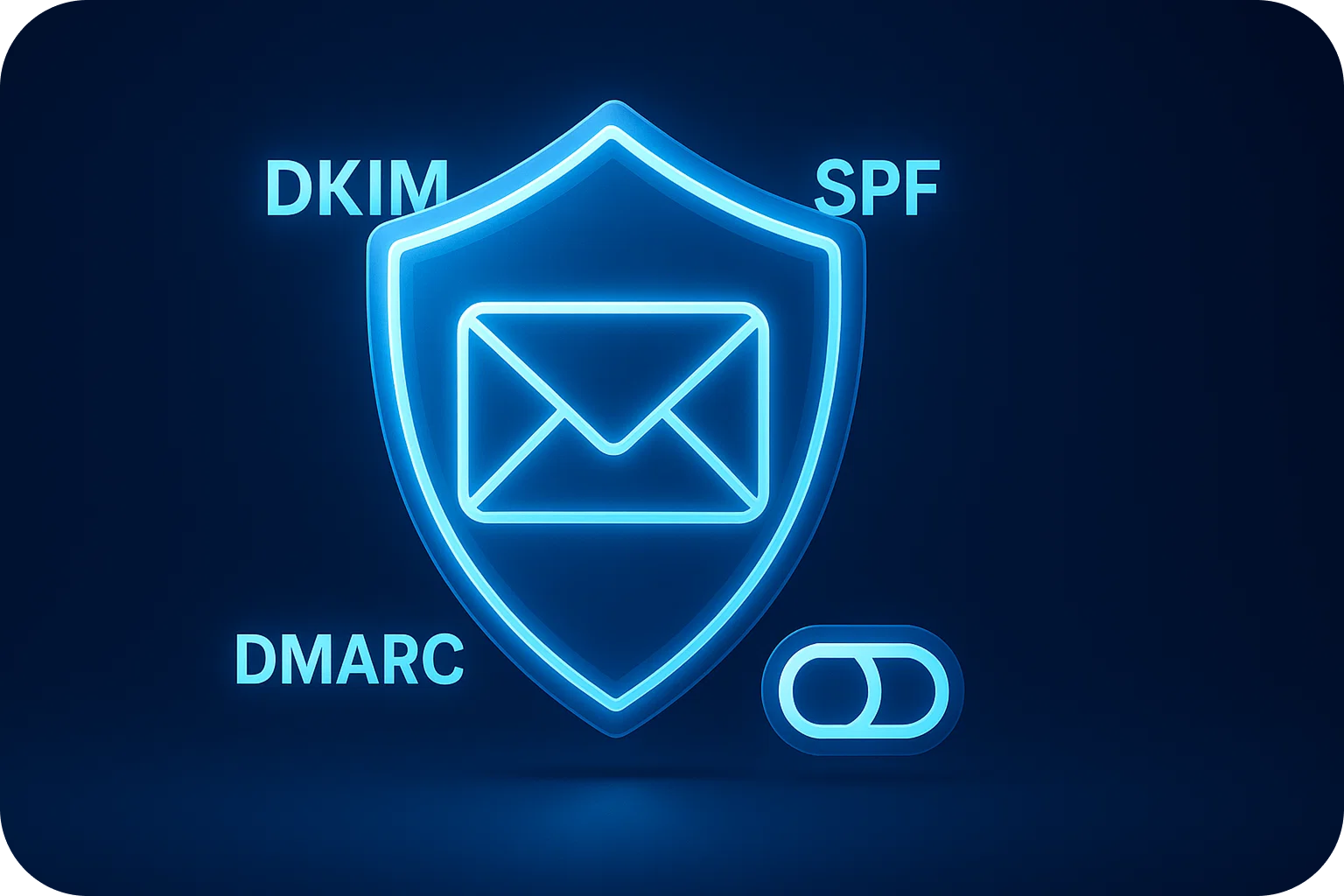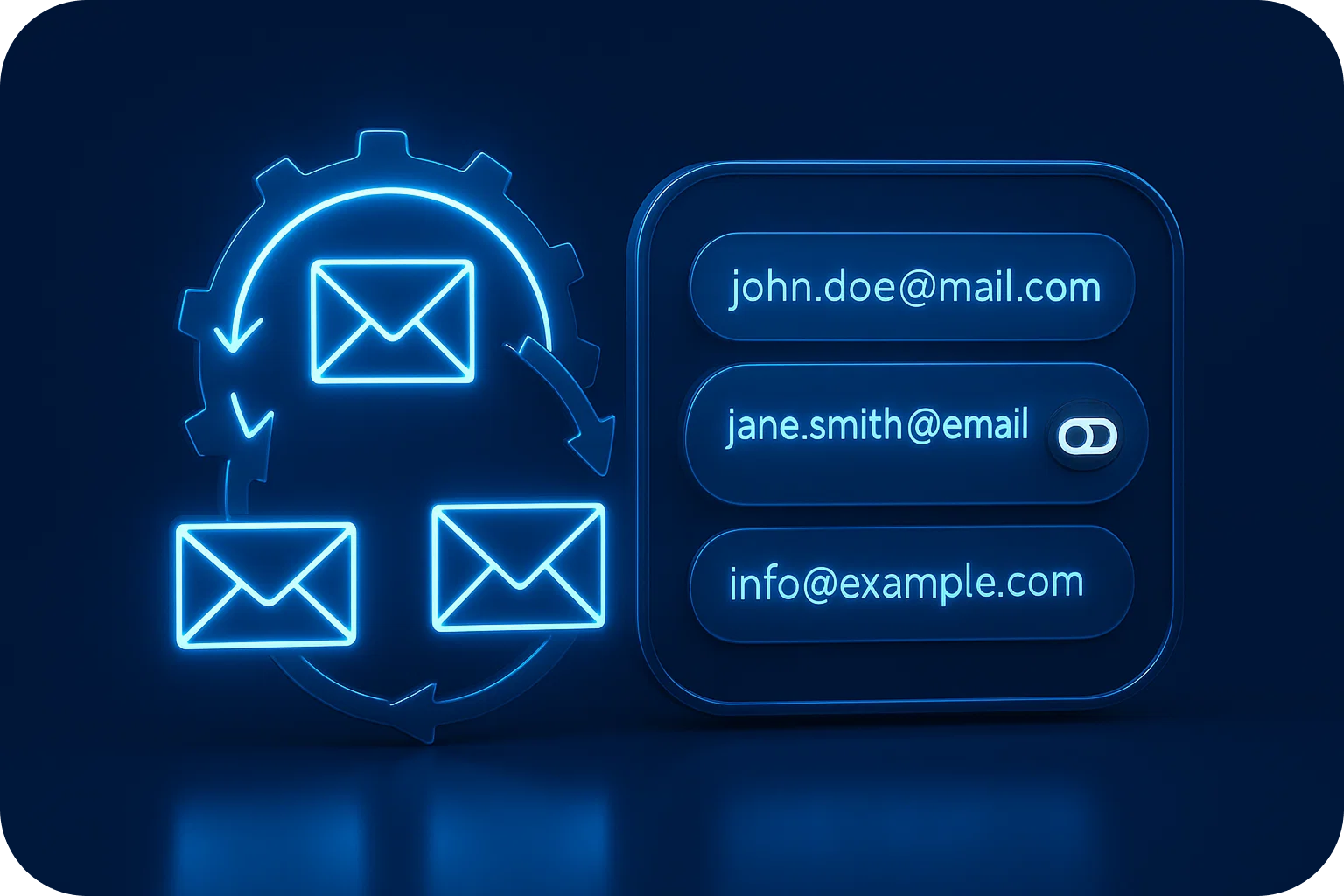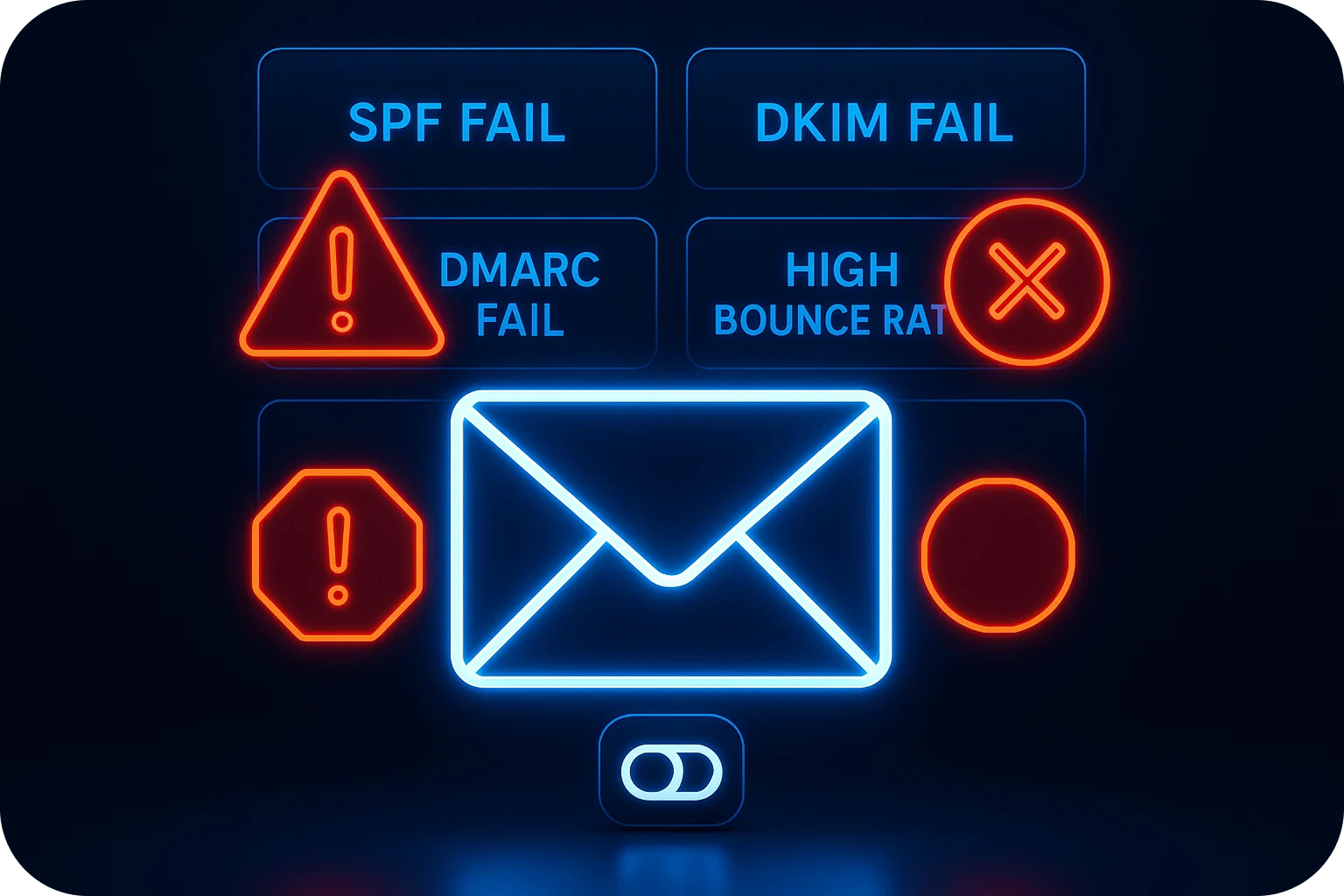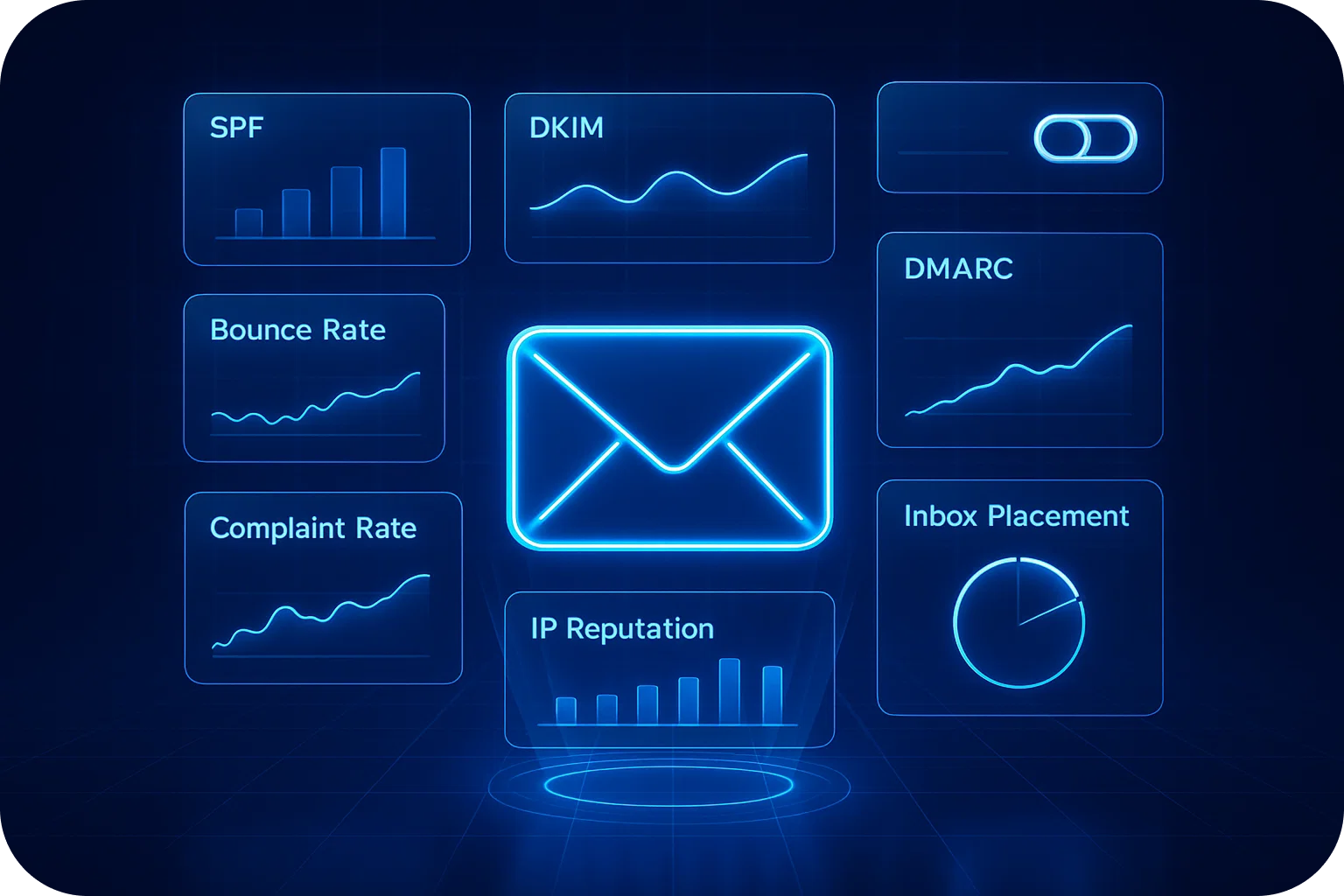Why Your Sales Team Needs Separate Email Infrastructure (And Your Marketing Team Does Too)
.png)
Your sales team just closed a major deal. Your marketing team launched a successful campaign. Everything's running smoothly until suddenly, your emails stop landing in inboxes.
What happened? The culprit is often a single point of failure: using the same email infrastructure for both sales outreach and marketing campaigns. This common mistake can tank your deliverability rates, damage your domain reputation, and cost you valuable opportunities.
Let's explore why separating your email infrastructure isn't just a best practice, it's essential for sustainable growth.
The Hidden Risk of Shared Email Infrastructure
When your sales and marketing teams send emails from the same domain and infrastructure, they're essentially putting all their eggs in one basket. Here's why that's problematic:
Different sending patterns create conflicting signals. Sales teams typically send personalized, one-to-one emails with high engagement rates. Marketing teams send bulk campaigns to larger lists with naturally lower engagement. When these activities share the same sender domains, email providers receive mixed signals about your sending reputation.
One team's mistake affects everyone. If your marketing team accidentally sends to an outdated list with high bounce rates, or your sales team gets aggressive with cold outreach, the resulting reputation damage impacts every email sent from that domain, including critical transactional messages and executive communications.
Volume spikes trigger spam filters. Email providers monitor sending volume carefully. When your marketing team launches a campaign that suddenly increases email volume from your domain, it can trigger spam filters that affect your sales team's carefully nurtured conversations.
Why Sales Teams Need Dedicated Email Infrastructure
Sales outreach has unique requirements that demand separate infrastructure:
Personalization at Scale
Modern sales teams need to send hundreds or thousands of personalized cold emails daily. This requires dedicated sender domains that can handle consistent volume without affecting your primary business domain. With separate infrastructure, you can scale your outreach from 20 emails per day to 2,000 without risking your company's email reputation.
A/B Testing Without Risk
Sales teams constantly test new messaging, subject lines, and approaches. Separate email infrastructure creates a safe sandbox for experimentation. If a particular approach doesn't resonate and generates spam complaints, the damage is contained to your sales domains—not your entire company.
Compliance and Monitoring
Cold outreach requires careful compliance with regulations like CAN-SPAM and GDPR. Dedicated infrastructure makes it easier to monitor sending practices, track opt-outs, and maintain detailed logs for compliance purposes. You can implement specific authentication protocols and monitoring systems tailored to outbound sales activity.
Why Marketing Teams Need Their Own Infrastructure
Marketing campaigns have equally compelling reasons for separate infrastructure:
Campaign Flexibility
Marketing teams need the freedom to send large-volume campaigns for product launches, newsletters, and promotional content. Separate infrastructure means they can execute ambitious campaigns without worrying about impacting sales conversations or operational emails.
Segmentation and Targeting
Different marketing campaigns often target different audience segments with varying engagement levels. Dedicated infrastructure allows you to create multiple sender domains for different campaign types; one for newsletters, another for promotional content, and another for re-engagement campaigns. This segmentation improves deliverability by matching sending patterns to audience expectations.
Better Analytics and Attribution
When marketing emails come from a dedicated infrastructure, you get cleaner data about campaign performance. You can accurately measure deliverability rates, engagement metrics, and conversion attribution without noise from sales or transactional emails.
The Domain Reputation Protection Strategy
Your primary business domain is your most valuable email asset. Every legitimate business email, customer communications, invoices, support tickets, and executive correspondence should come from this domain. Protecting its reputation is paramount.
Here's the strategic approach successful companies use:
Primary Domain: Reserved exclusively for essential business communications, transactional emails, and person-to-person correspondence from company email addresses.
Secondary Domains for Sales: Dedicated sender domains for cold outreach and prospecting. These domains are similar to your primary domain but separate enough to isolate risk. For example, if your business is "company.com," your sales domains might be "trycompany.com" or "getcompany.com."
Secondary Domains for Marketing: Separate domains for marketing campaigns, newsletters, and promotional content. These might include "news.company.com" or "updates.company.com."
This three-tier approach ensures that aggressive growth activities never compromise your core business communications.
The Technical Requirements for Separate Infrastructure
Setting up a separate email infrastructure might sound complex, but it breaks down into manageable components:
Multiple Sender Domains
You'll need to register and configure secondary domains for sales and marketing use. Each domain requires proper DNS configuration, including SPF, DKIM, and DMARC records to ensure authentication and deliverability.
Dedicated Email Accounts
Each domain needs multiple email accounts to distribute sending volume. Best practices suggest limiting each inbox to 50-100 emails per day and using 3-5 inboxes per domain to maintain healthy sending patterns.
IP Address Separation
For high-volume senders, dedicated IP addresses provide additional isolation. Shared IPs work well for most startups and growing companies, but enterprises often benefit from dedicated IPs that give them complete control over sender reputation.
Proper Warm-Up Protocols
New sender domains and email accounts need gradual warm-up periods, typically 3-4 weeks, before reaching full sending capacity. This establishes a positive sending history with email providers and builds domain reputation.
Real-World Impact: The Numbers Don't Lie
Companies that implement separate email infrastructure see measurable improvements:
Deliverability rates improve to 96-98% when sales and marketing use dedicated infrastructure, compared to 70-85% for companies using shared infrastructure.
Sales teams can scale outreach 10-100x without hitting deliverability issues when they use properly configured secondary domains.
Marketing campaigns see 15-25% higher open rates when sent from dedicated domains with established sending patterns.
Primary domain reputation remains pristine, ensuring critical business communications always reach their destination.
Common Objections (And Why They Don't Hold Up)
"Isn't this too complicated to manage?" Modern email infrastructure platforms automate the complex parts, DNS configuration, inbox setup, warm-up protocols, and deliverability monitoring. Implementation typically takes 10 minutes, not weeks.
"Won't secondary domains look less legitimate?" When properly configured with correct authentication and gradual warm-up, secondary domains achieve the same deliverability as primary domains. Recipients rarely notice the domain difference when emails are personalized and relevant.
"This sounds expensive." The cost of separate infrastructure is minimal compared to the revenue lost from poor deliverability. Most solutions charge $3-5 per mailbox monthly, a fraction of the cost of one lost deal.
Getting Started: Your Implementation Roadmap
Ready to separate your email infrastructure? Here's your step-by-step approach:
Step 1: Audit Current Sending. Document your current email volume, sending patterns, and deliverability rates for both sales and marketing activities.
Step 2: Register Secondary Domains. Choose and register domains for sales and marketing use. Keep them similar to your primary domain for brand consistency.
Step 3: Configure Email Infrastructure. Set up dedicated email accounts, configure DNS records (SPF, DKIM, DMARC), and establish proper authentication.
Step 4: Implement Warm-Up Protocols. Gradually increase sending volume over 3-4 weeks to build domain reputation with email providers.
Step 5: Monitor and Optimize. Track deliverability metrics, inbox placement rates, and engagement data. Adjust sending patterns based on performance.
Step 6: Scale Strategically. Once your infrastructure is established and warmed up, gradually increase volume while maintaining best practices.
The Bottom Line
Separate email infrastructure isn't a luxury; it's a fundamental requirement for any company serious about sales and marketing success. By isolating your outreach activities from your core business communications, you protect your most valuable asset (your primary domain) while giving your sales and marketing teams the freedom to scale aggressively.
The companies winning at email outreach aren't the ones sending the most emails, they're the ones whose emails actually reach inboxes. Separate infrastructure is how they do it.
Your sales team needs dedicated sender domains to scale personalized outreach without risk. Your marketing team needs a separate infrastructure to execute ambitious campaigns without constraints. And your business needs its primary domain protected from the inevitable challenges that come with growth.
The question isn't whether you should separate your email infrastructure. It's whether you can afford not to.
More articles
Get started now




%201.png)





